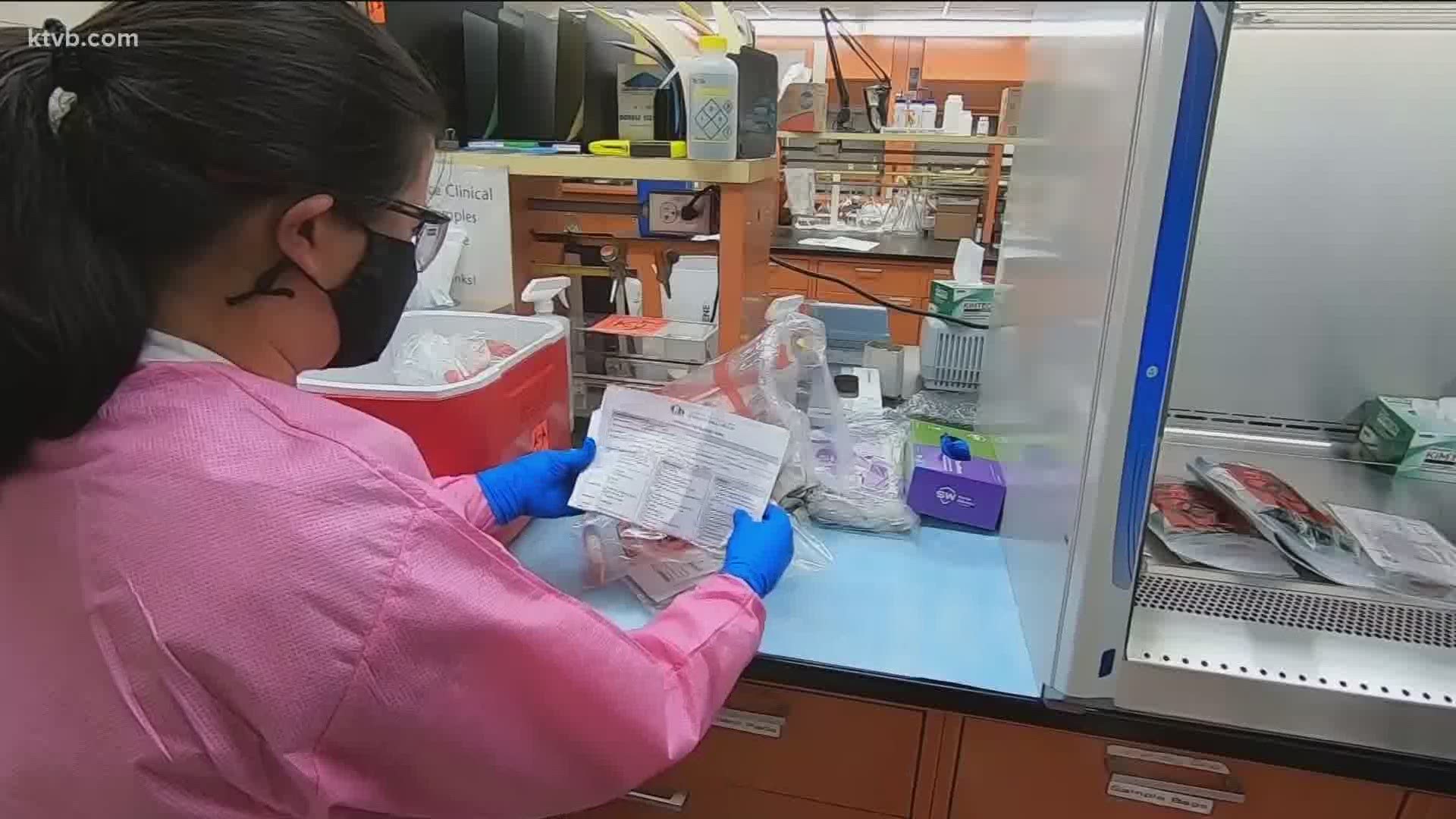BOISE, Idaho — When the COVID-19 pandemic began in early March, the Idaho Bureau of Laboratories was facing a crucial problem: low COVID-19 testing capacity.
In the beginning, IBL was only able to run about 20 tests per day. Now, they can run about 600 a day and expect to double testing capacity once again in the next several months.
As the Gem State's only public health lab supporting public and environmental health, IBL conducts a variety of infectious disease testing in support of public health outbreak investigations, such as COVID-19.
The lab currently has 39 full-time employees and eight temporary staff members running tests
"Our average testing capacity right now is between 500 and 600 samples per day, but it varies on how the day goes and how samples come in," IBL Lab Director Dr. Christopher Ball said.
The process of determining if a person is COVID-19 positive is quite extensive. When a test is administered to a high-priority patient, it is sent to IBL that same day.
Upon arrival, staff unload the tests from transport vehicles and log the demographic information into the lab's database.
"We’re working on processing samples at the same time we’re entering data so that when the sample results are ready, everything in the database is there," Ball said.
Once the receiving process is completed, staff members will extract the viral particles from the test tubes and begin analyzing the samples. A small volume of what is called an "aliquot" is pulled from the sample and placed into a deep well block.
"So manually you’re using a small volume of liquid from sample tube into the sample block inside a biosafety cabinet. And inside this block prior to the transfer, we have a solution that deactivates any of the viral particles so it kills all of the viruses," Ball explained. "Once this deep well block is completely filled, then we’ll cover it with a piece of adhesive film so that you don’t have any spillage or transfer between samples, and then we will extract all of the RNA out of each of those samples."
Once all of the data entry is complete, and it’s double-checked, then a report is issued.
The testing process typically takes about four hours but can take up to a week depending on backlogs. However, IBL usually returns results to healthcare providers 2-3 days after the results are shipped.
"Depending on where the sample is coming from, if it’s coming from North Idaho and it’s coming via FedEx, then we’re going to get it the next day," Ball said. "So it builds in 24 hours from sample collection to where we can actually get it at the lab and start the testing process."
Over 95% of tests are sent back to healthcare providers electronically. From that point, providers are tasked with reporting test results back to the patients.
IBL is starting to work closely with Native American tribes and other underserved communities as they improve efficiency and capacity.
With the lab running almost 600 tests a day, there is room for false positives and negatives, but that possibility is small.
"The PCR tests that we are currently using has a sensitivity value in excess of 99%," Ball said. " It’s a bit technical, but the false negative result is possible, but probably not probable with the levels of disease that we’re currently seeing, likewise for false-positive results as well."
Those working in the testing labs are highly trained scientists who, according to Ball, have really big hearts.
But we also have a role in protecting ourselves.
"I know that everybody has a sense of coronavirus fatigue and we’re tired of the last six months of our lives being completely disrupted," Ball said. "People just need to continue doing the right thing."
Ball said the lab is currently preparing for a significant rise in testing demand with flu season right around the corner. IBL plans to adopt a method the CDC is currently developing in which employees will be able to test for COVID-19 and the flu simultaneously.
Facts not fear: More on coronavirus
See our latest updates in our YouTube playlist:

